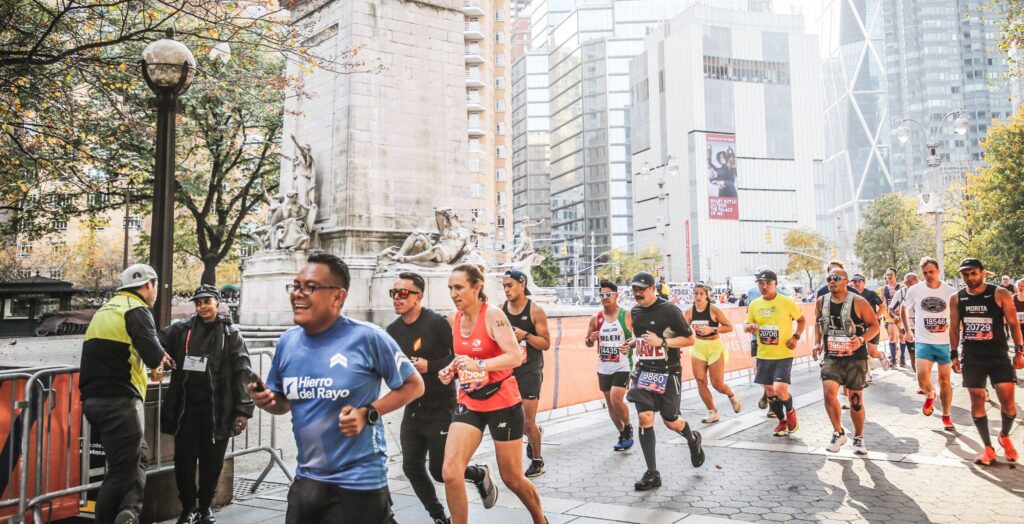It’s Taper Time
travelogue
TAPERING TIPS
Tapering is a delicate balance of maintaining fitness while promoting recovery. The following is a step-by-step guide to making sure you get the most out of your taper.
In the first week of the taper, you should gradually decrease your kilometres while still maintaining your intensity. This will help your body recover from all the kilometres you’ve logged while still staying in shape.
The second week is all about rest and recovery. You should still be doing some light workouts, but the focus should be on getting plenty of sleep and eating well. This is also a good time to start visualising your race and picturing yourself crossing the finish line.
The final week is when you really start to taper off. You should only be doing easy runs this week, and your longest run should be no more than 16kms. This is also the time to start carb-loading so that you have plenty of energy on race day. By following these steps, you’ll be well-rested and ready to take on the marathon!

THREE WEEKS OUT
Three weeks before your goal race is not the time to start making drastic changes to your training plan. Instead, you should focus on reducing your weekly kilometres by 15% and maintaining workout intensity. This will help your body to recover while still being in peak condition on race day.
Remember, your body needs 10 days to recover from a workout, so plan your last workout accordingly. With these tips in mind, you can cross the finish line with confidence knowing that you’re prepared.
You should now start to reduce the volume of your long runs. This doesn’t mean you should eliminate the long run completely, but you don’t want to make yourself too tired. If your longest run so far was 32kms, aim for a run anywhere from 21 – 28km. However, listen to your body. If you feel sluggish and tired, have the confidence to cut the long run back. By reducing the volume of your long runs, you’ll be able to focus on other important aspects of your training and avoid burning out before race day.
Two weeks before your goal race, you should do one medium intensity workout. The volume of this workout should be reduced by 60-70% of your normal hard day. For example, if your tempo intervals usually total 16km, this workout should be about 8 – 10km in total distance. Again, make sure the workout is marathon specific, so no VO2max workouts. This is a good opportunity for you to practice marathon pace. By doing a medium intensity workout at this point in your training, you will be able to gauge where you are and make any necessary adjustments to your race plan.

TWO WEEKS OUT FROM YOUR GOAL RACE
Two weeks before your goal race, you should be tapering your mileage to allow your body to recover from the training you’ve done up to this point. This means reducing your long run by 50 to 60%. This will help to prevent injury and fatigue so that you can perform your best on race day. Even though you may be feeling fresh and energetic at this point in your training, it’s important to resist the urge to overdo it. Stick to the plan and trust that the taper will pay off on race day.

RACE WEEK
The week of the race is a critical time for runners. It is important to significantly reduce mileage in order to allow the body to recover. The extra rest day and reduced volume of runs will help to ensure that runners are fresh and rested for the big day. Additionally, this is also a good time to focus on carbohydrate loading in order to get the body prepared for the marathon. By following these simple tips, runners can set themselves up for success on race day.
The week of the race is an important time to focus on keeping your body healthy and rested. You don’t want to do too much running, as you don’t want to risk injury or fatigue. Instead, I advise doing one very easy fartlek session. This will help alleviate nerves and remind your body what marathon pace feels like. The workout should be something like: 15–20-minute warm-up, 6-8 x 2 minutes at marathon pace with 2 minutes easy running between, 10–15-minute cool down. This won’t leave you fatigued, but it will give you a little bit of confidence and a nice pop in your step. The week of the race is the most important time to focus on your tapering strategy. The key is to find the perfect balance of rest and activity. Too much rest and you run the risk of being under-prepared, too little activity and you might be over-trained. I suggest running anywhere from 2-4kms very easy. This will help promote blood flow in your legs and make you less nervous. Running the day before a race also stimulates the central nervous system, which will enable your legs to respond better the following morning. By following these simple tips, you’ll be on your way to a successful marathon taper.




 Hub
Hub Marathon
Marathon